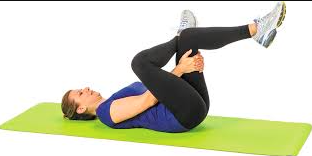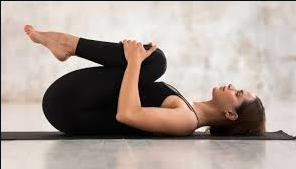Best Exercise for Knee Joint Pain: A Complete Guide to Relief and Strength
Introduction best exercise for knee joint pain:
best exercise for knee joint pain:Knee joint pain is one of the most common musculoskeletal problems worldwide, affecting people of all ages. Whether caused by arthritis, injury, or wear and tear, knee pain can make even simple daily tasks—like walking, climbing stairs, or standing up—challenging.best exercise for knee joint pain:
While medications and therapies provide relief, exercise is one of the most effective long-term solutions. Choosing the best exercise for knee joint pain not only reduces discomfort but also strengthens muscles, improves flexibility, and prevents further injury.
This comprehensive guide explores the most effective exercises for knee pain relief, backed by research and physiotherapy principles.
Understanding Knee Joint Pain
The knee is a complex joint involving bones, cartilage, ligaments, and muscles. Pain occurs when any of these components are strained, injured, or inflamed.
Common causes of knee joint pain include:
- Osteoarthritis: Age-related cartilage breakdown.
- Rheumatoid arthritis: Autoimmune inflammation of the joint.
- Sports injuries: Meniscus tears, ligament injuries, or sprains.
- Overuse: Repetitive stress from running or heavy lifting.
- Obesity: Extra body weight putting pressure on the knees.
Understanding the root cause is crucial before starting any exercise program.
Why Exercise Is the Best Solution for Knee Joint Pain
Many people with knee pain avoid movement, fearing it will worsen the condition. However, inactivity can make pain worse by causing stiffness, muscle weakness, and reduced joint mobility.
Benefits of exercise for knee joint pain include:
- Strengthens supporting muscles around the knee.
- Improves flexibility and range of motion.
- Enhances blood flow, reducing stiffness.
- Supports weight management.
- Prevents future injuries.
Best Exercises for Knee Joint Pain Relief
Below are physiotherapist-approved exercises that are gentle, safe, and effective for strengthening the knees.
1. Quadriceps Strengthening Exercises
The quadriceps (front thigh muscles) play a major role in knee stability. Strengthening them reduces pressure on the knee joint.
Examples:
- Straight Leg Raises:
- Lie flat on your back.
- Keep one leg bent and the other straight.
- Lift the straight leg about 12 inches off the ground.
- Hold for 3–5 seconds, then slowly lower.
- Repeat 10–15 times per leg.
- Quad Sets:
- Sit with your legs extended.
- Tighten your thigh muscles by pressing the back of your knee into the floor.
- Hold for 5–10 seconds.
- Repeat 10 times.
2. Hamstring Strengthening Exercises
The hamstrings (back thigh muscles) work with quadriceps to stabilize the knee.
Examples:
- Hamstring Curls:
- Stand with support.
- Bend one knee and bring your heel toward your buttocks.
- Hold for 5 seconds, then lower.
- Repeat 10–15 times on each leg.
- Bridge Exercise:
- Lie on your back with knees bent and feet flat.
- Lift hips upward until your body forms a straight line.
- Hold for 3–5 seconds.
- Slowly lower back down.
3. Calf Strengthening Exercises
Strong calves absorb impact and ease knee pressure.
Example:
- Calf Raises:
- Stand straight, feet hip-width apart.
- Slowly rise on your toes, then lower.
- Repeat 10–20 times.

4. Low-Impact Aerobic Exercises
Low-impact cardio is among the best exercises for knee joint pain because it strengthens muscles without putting stress on the joint.
Best options include:
- Swimming and Water Aerobics: Buoyancy reduces pressure on joints.
- Cycling (stationary bike): Improves mobility and strength.
- Elliptical Trainer: Smooth movement protects knees.
- Walking: Improves circulation and strengthens muscles.
5. Flexibility and Stretching Exercises
Stretching reduces stiffness and prevents injuries.
Examples:
- Hamstring Stretch: Sit on the floor with legs extended, reach toward your toes.
- Quadriceps Stretch: Stand, bend one knee, and hold your ankle to stretch the front thigh.
- Calf Stretch: Place hands on a wall, step one foot back, and press the heel down.
Hold each stretch for 20–30 seconds, repeating 2–3 times.
6. Balance and Stability Exercises
Improving balance reduces the risk of falls and knee injuries.
Examples:
- Single-Leg Stand: Stand on one leg for 10–20 seconds, then switch.
- Heel-to-Toe Walk: Walk in a straight line placing one foot directly in front of the other.
7. Yoga and Pilates for Knee Joint Pain
Mind-body exercises like yoga and Pilates are gentle yet highly effective for joint health.
Benefits include:
- Improves flexibility and balance.
- Enhances muscle strength.
- Reduces stress, which can worsen pain.
Recommended poses: Child’s pose, Warrior pose, and Bridge pose.
Precautions Before Doing Knee Exercises
While exercise is beneficial, safety is important:
- Warm up before exercising.
- Start with low-intensity movements.
- Avoid high-impact activities like jumping or running.
- Stop immediately if sharp pain occurs.
- Consult a doctor or physiotherapist before starting a new program, especially for arthritis or post-surgery patients.
Lifestyle Tips Alongside Knee Exercises
Exercise works best when combined with healthy habits:
- Maintain a healthy weight to reduce knee pressure.
- Eat an anti-inflammatory diet rich in omega-3 fatty acids, fruits, and leafy greens.
- Stay hydrated for joint lubrication.
- Wear proper footwear with cushioning.
- Take breaks from sitting to prevent stiffness.
Conclusion
Knee joint pain doesn’t have to limit your life. Incorporating the best exercises for knee joint pain—such as quadriceps strengthening, hamstring curls, stretches, and low-impact aerobics—can significantly improve strength, flexibility, and overall joint health.
By combining exercise with lifestyle changes, weight management, and medical guidance, you can reduce pain, prevent further damage, and enjoy a more active life. Remember: consistency is key. Gentle, regular movement is far more effective than occasional intense workouts.
FAQs
1. What is the best exercise for knee joint pain caused by arthritis?
Low-impact exercises like swimming, cycling, and gentle leg-strengthening routines are best for arthritis-related knee pain.
2. Can walking help with knee joint pain?
Yes, walking improves circulation, strengthens muscles, and keeps joints flexible. However, it should be moderate and not excessive.
3. Should I avoid exercise if I have knee pain?
No. Resting too much can worsen stiffness and weakness. The key is doing safe, low-impact, and strengthening exercises.
4. How often should I exercise for knee pain relief?
Aim for at least 20–30 minutes, 3–5 times per week, depending on your comfort and doctor’s advice.
5. Can yoga help with knee joint pain?
Yes. Yoga improves flexibility, strengthens muscles, and reduces stress, all of which contribute to better knee health.





